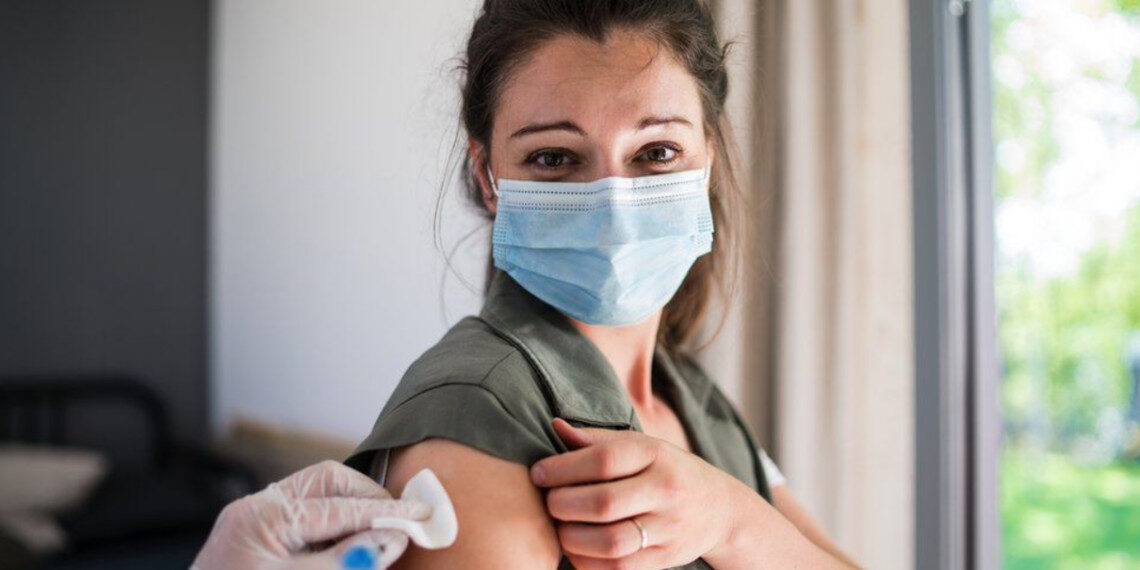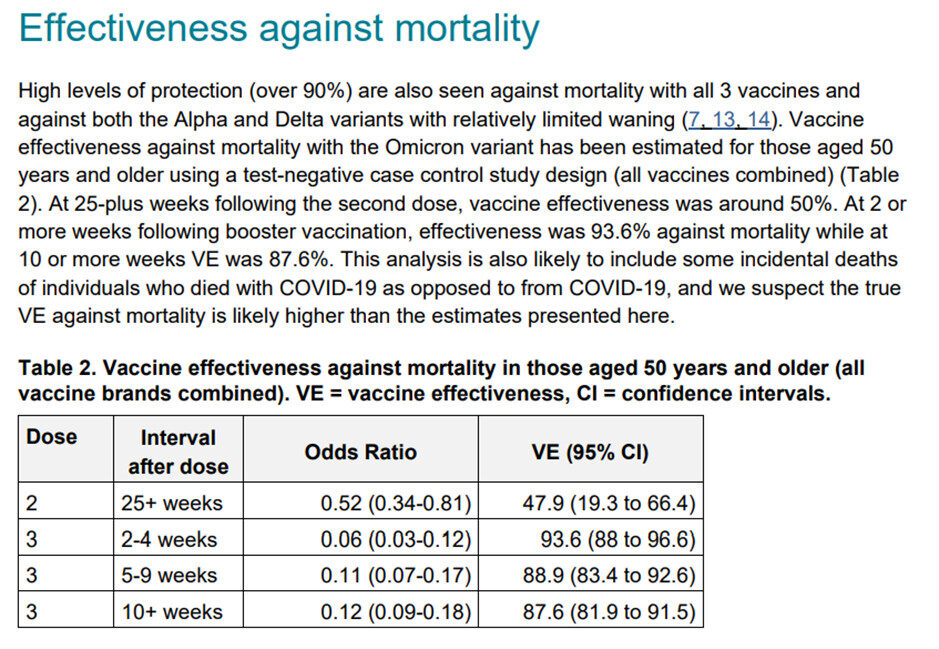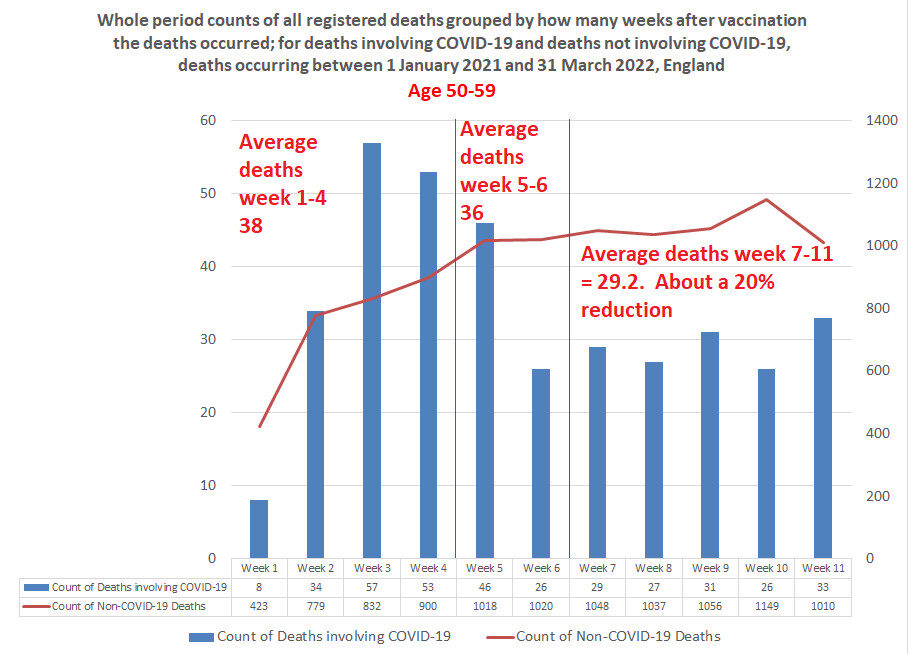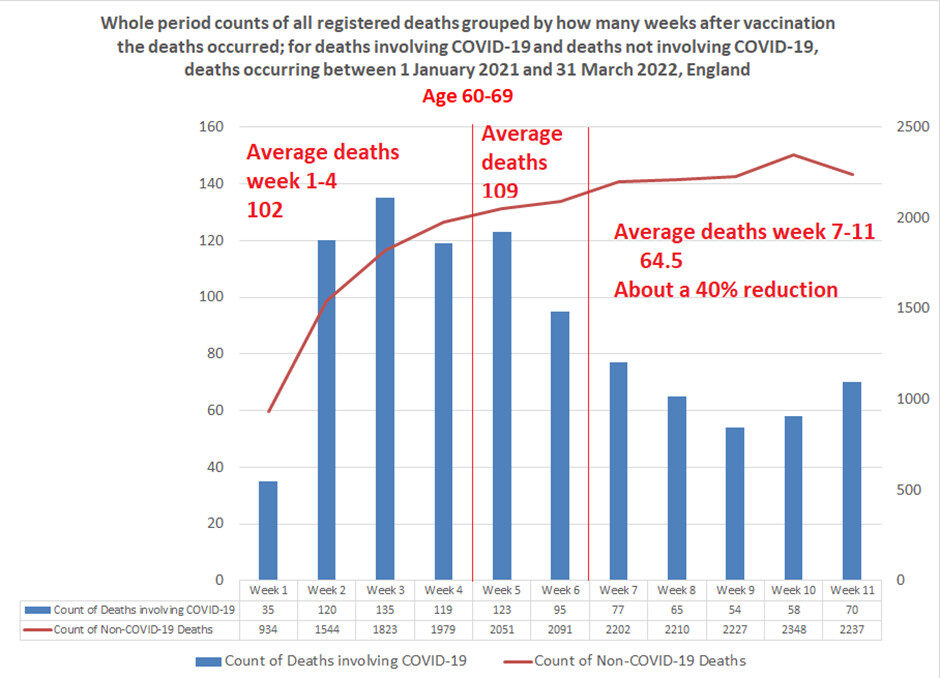However, finding real-world data on vaccine efficacy is increasingly difficult. In recent months the UKHSA, ONS and NHS have stopped releasing real-world data on Covid cases, hospitalisations and deaths by vaccination status. This makes it effectively impossible to see if claims for vaccine efficacy turn out to be substantiated.
In previous articles I've used data from UKHSA and ONS to question both the protection vaccines afford against infection and against death. However, the data I'd used in these pieces only covered a relatively short time period. I wanted to see if I could find data covering the impact of vaccines on 40-somethings right through the vaccination period.
I thought a good place to start would be the fascinating paper by Professor Norman Fenton, Martin Neil, Clare Craig, Joel Smalley and colleagues, "Official mortality data for England suggest systematic miscategorisation of vaccine status and uncertain effectiveness of COVID-19 vaccination", which delivers a devastating critique of so much of the official narrative. Could this give me any pointers? It led me to a report, "Deaths by Vaccination Status", produced by the ONS. Tucked away in the dataset I found a set of data, Table 9, which seemed to have just what I was looking for: data on deaths by age cohort in the weeks following vaccination. Using these data I was able to compare deaths of vaccinated people in the different age cohorts, week by week in each of the sequential weeks from their last vaccination.
Because the report analysed data on a week by week basis from vaccination it effectively created something of a control group. People getting vaccinated were supposed to be clear of the virus for at least four weeks prior to vaccination and, as we know, it takes about two weeks before the vaccines have much impact. This means that deaths soon after a first dose, or after a later dose where the effectiveness of the previous dose has waned significantly, aren't impacted by vaccination. Consequently, we are able to compare deaths soon after vaccination with deaths at a later date, once the vaccination has worked its 'magic', to see the impact of the last vaccine dose. We should expect deaths to decrease rapidly as we get further away from the date of vaccination.
As I was interested in the deaths of younger people I focused my analysis on the 40-49 year-old cohort. Fig 1 shows the number of deaths of 40-49 year-olds recorded by ONS in the 15 months from January 1st 2021 to March 31st 2022 by week following vaccination. The ONS report covers about 530,000 deaths in England (from all causes) across all age cohorts, of which 3,640 were deaths of people in the 40-49 age cohort.
In the chart below, the red line shows 3,514 deaths not associated with Covid, whereas the blue bars are the 126 deaths that were associated with Covid, week by week over the first 11 weeks post vaccination. I included the non-Covid deaths to highlight the issue of the healthy-vaccinee: people close to death may not be vaccinated, which is why the week immediately following vaccination has an artificially low number of deaths. It's perhaps just worth noting that Covid deaths in this age group represented just 3.5% of the total, meaning if you're in your 40s you're 28 times more likely to die of something other than Covid.
Just to clarify, deaths occurring within one week of vaccination are put into the "week 1" group. Deaths occurring in the second week following vaccination are allocated to "week 2", and so on up to week 11. Deaths occurring 12 or more weeks after a vaccination are grouped into a single 12+ group. For the purposes of this analysis I've only looked at deaths in the first 11 weeks.
In the chart I've separated the weeks into three groups:
- Deaths mainly from pre-vaccine infection, these are the deaths occurring in weeks 1-4 following vaccination. Average deaths per week were 11.
- Deaths pre-vaccination impact. These are those deaths occurring in weeks 5 and 6, where it's likely that infection occurred around the time of vaccination but before the latest vaccination would have had any impact. Average deaths per week were 12.
- Deaths post vaccine impact. Deaths occurring in weeks 7-11 are likely to have been of people whose vaccination should have reached full effectiveness by the time they were infected. Average deaths per week were 11.6.
The average number of weekly deaths in the last three weeks (week 9-11) was 12.3, as high as any other consecutive three week period during the 11 weeks.
This doesn't look like 90% efficacy against death to me. Of course, many of these vaccinations are a second or third dose of vaccine, so perhaps we shouldn't expect such a dramatic reduction in deaths, assuming the earlier doses are already giving some protection. But surely, if the efficacy has declined sufficiently to justify giving an additional dose, we should be seeing some impact of the latest dose?
But let's just check the lag times involved. Naturally we'd expect relatively low deaths in the first few weeks after vaccination because people presenting for vaccination were supposed to have been clear of the virus for four weeks. The surprise here is that any one at all died of or with Covid in weeks 1 or 2; yet deaths in week 2 were the joint highest with week 5.
The ONS has estimates of the most likely time lags between infection, hospitalisation and death as follows:
- The time between COVID-19 infection and symptom onset varies between one and 14 days, with an average of five to six days.
- The median delay (lag) between symptom onset and hospital admission varies between one and 6.7 days depending on age and whether the patient lives in a nursing home.
- Time between symptom onset and death from COVID-19 ranges from two to eight weeks, with reported median times of 16 or 19 days.
The official narrative would lead us to believe that fatality rates during weeks 3, 4 and 5 would increase to the prevailing rate of non-, or not-recently- vaccinated people as these are people who were clear of virus prior to vaccination and whose vaccine impact shouldn't kick in a week or so after vaccination. The UKHSA weekly COVID-19 vaccine surveillance report (see below) claims 93.6% efficacy against death after two to four weeks for the over-50 cohort; I don't suppose its claim for efficacy in 40-49 year-olds would be very different. This means that we should expect to see fatalities dropping off dramatically after about week 5. But we don't; in fact, deaths start rising again after the middle weeks.
The picture for the 50-59 year-old (see below)) cohort follows more closely the profile of deaths following vaccination that we're led to expect. Deaths in the first week or so after vaccination are low, rising in week 2 and 3 before declining. However, deaths in the last five weeks are only about 20% lower than the average number of deaths in the early weeks, though about 40% below the peak weeks. Still, this is a long way from the reduction in deaths we might expect given 90%-plus efficacy. What's more, from week 7 deaths appear to be rising modestly. Has the vaccine effect already worn off?
Deaths amongst the 60-69 year-olds (see below) again seem to follow the predicted path. However, the trough in week 9 at 54 deaths, a drop of 60% on the week 3 peak, appears short lived. Indeed, by week 11 deaths have climbed back up by 30% to 70. Overall, deaths in the final five weeks at 40% or so below the earlier weeks still seems a long way short of the claimed level of efficacy against death.
We keep hearing that vaccine efficacy is short lived. From this real-world data it appears it may be absent altogether in the 40-49 year-old cohort and both shallower and transient in the 50-69 year-old cohorts - though we must allow that efficacy from previous doses may be confounding the estimates.
What to make of it? I'm not sure. For me, the fundamental problem is that I've lost confidence in the data released by the various Government bodies and even more so in their interpretation of that data. Time and again we see that real-world data doesn't match the narrative and rather than explain the discrepancy the real world data is simply withdrawn. Personally, I'm as sceptical of the claims that vaccines are doing untold harm as I am that they're doing untold good. By continually overstating their benefits and understating their risks there's been a huge growth in vaccine resistance. About 25% of the people who had their first dose haven't had a booster, with this drop-off most marked in the younger age groups. With real-world efficacy data like these, we should hardly be surprised.








Comment: See also: